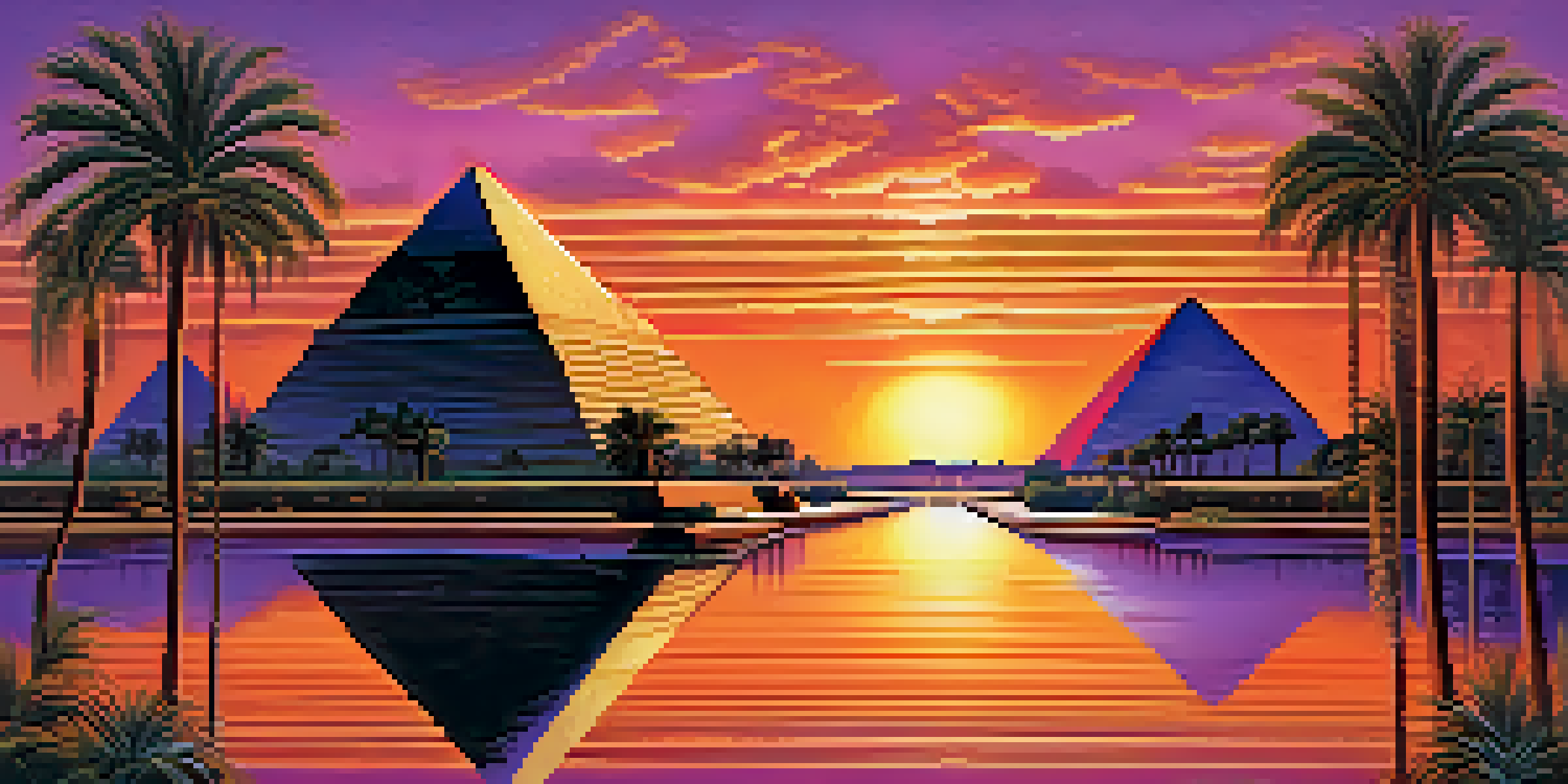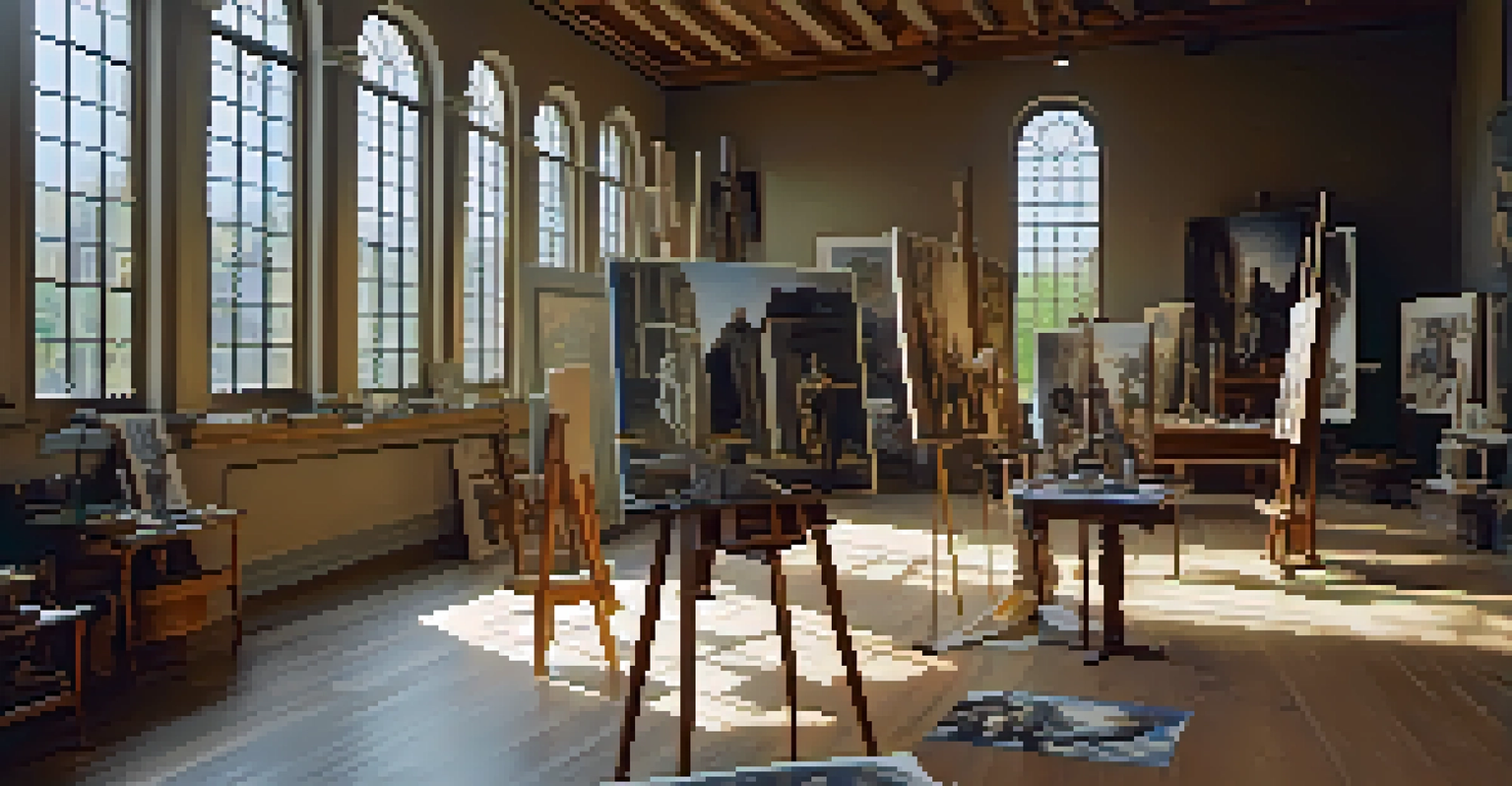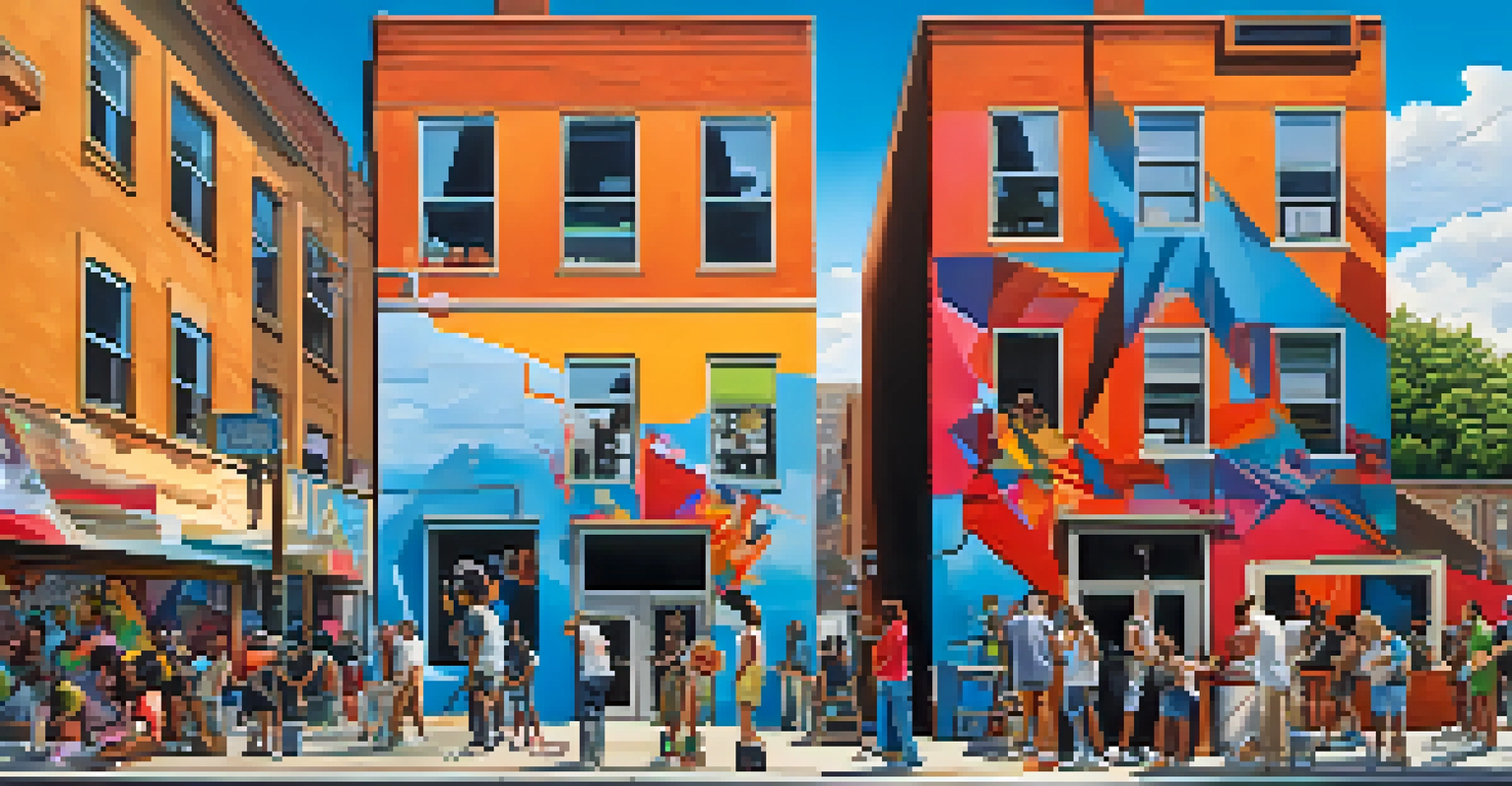The Concept of Beauty: Historical Perspectives in Art Theory

Understanding Beauty: A Multifaceted Concept
Beauty is not just skin deep; it's a complex blend of perceptions shaped by culture, tradition, and individual experience. Throughout history, various societies have defined beauty differently, often reflecting their values and ideals. For example, ancient Greeks viewed beauty in harmony and proportion, which influenced their art and architecture significantly.
Beauty is in the eye of the beholder.
In contrast, the Renaissance period redefined beauty, emphasizing realism and human emotion. Artists like Leonardo da Vinci and Michelangelo celebrated the human form, showcasing beauty as a representation of divine perfection. This shift not only altered artistic techniques but also how beauty was perceived in society.
Related Resource
Today, our understanding of beauty is even more diverse, thanks to globalization and digital media. We encounter countless interpretations of beauty that challenge traditional norms, inviting discussions about inclusivity and representation in art.
Ancient Perspectives: Beauty in Early Civilizations
In ancient civilizations, beauty often intertwined with spirituality and the divine. The Egyptians, for instance, created art that embodied their religious beliefs, with symmetrical forms and vibrant colors symbolizing order and harmony. Their depiction of beauty was not merely aesthetic; it served a purpose in connecting the earthly with the divine.

Similarly, in ancient Greece, beauty was deeply rooted in philosophy. The concept of 'kalokagathia' combined physical beauty with moral virtue, suggesting that true beauty encompassed both appearance and character. This belief was reflected in their sculptures, which aimed to capture the ideal human form, showcasing perfection and proportion.
Beauty Reflects Cultural Values
Throughout history, different cultures have defined beauty in ways that reflect their unique values, beliefs, and ideals.
These early perspectives set the stage for future discussions on beauty, influencing not only art but also literature and philosophy. The legacy of these civilizations continues to resonate, reminding us that beauty often reflects deeper cultural and ethical values.
The Renaissance: A New Dawn for Artistic Beauty
The Renaissance marked a revolutionary period in art, where beauty was redefined through the lens of humanism. Artists began to emphasize individual experience and emotion, moving away from the purely religious themes of earlier periods. This shift allowed for a more personal interpretation of beauty, making it more accessible and relatable to the public.
The best artist has no conception that a marble block does not contain within itself, but he is the one who helps it reveal its beauty.
During this era, techniques such as chiaroscuro and perspective emerged, enhancing the realism in art. Artists like Raphael and Titian explored the beauty of the human figure, capturing not only physical attributes but also emotional depth. Their works resonated with viewers, showcasing beauty as a multifaceted experience.
Related Resource
This period laid the groundwork for future artistic movements, emphasizing that beauty is not just a static concept but rather a dynamic interplay of ideas and emotions. The Renaissance's influence continues to inspire contemporary artists who strive to capture the essence of beauty in their work.
The Enlightenment: Rationality Meets Aesthetic Beauty
The Enlightenment brought forth a wave of intellectual thought that influenced perceptions of beauty. Philosophers like Kant and Hume explored the nature of beauty, arguing that it arises from a sense of pleasure derived from the harmonious arrangement of elements. Their ideas shifted the focus from beauty as an objective quality to a subjective experience.
Art during this period reflected these philosophical shifts, with neoclassicism emphasizing order and clarity. Artists drew inspiration from ancient Greek and Roman aesthetics, striving for ideal beauty through balanced compositions and restrained emotions. This focus on rationality in art mirrored the broader societal emphasis on reason and logic.
Art Evolution Shapes Beauty's Meaning
Art movements such as the Renaissance and Romanticism have continually redefined beauty, emphasizing emotional depth and personal experience.
As beauty became intertwined with intellect, it opened up discussions about taste and aesthetics, leading to a deeper exploration of individual preferences. The Enlightenment laid the foundation for modern art theory, reminding us that our understanding of beauty is both personal and philosophical.
Romanticism: Emotion as the Essence of Beauty
In the late 18th and early 19th centuries, Romanticism emerged as a reaction against the rationalism of the Enlightenment. It championed emotion, nature, and individualism, redefining beauty as something deeply personal and often tumultuous. Artists like Caspar David Friedrich and Eugène Delacroix embraced the sublime, emphasizing emotional experiences over classical ideals.
This shift allowed for a broader interpretation of beauty, where dramatic landscapes and intense emotions became central themes. The Romantic artists sought to evoke feelings of awe and wonder, challenging viewers to connect with their own emotions. Beauty was no longer confined to idealized forms; it embraced the rawness of human experience.
Related Resource
Romanticism's legacy persists in contemporary art, where emotional expression remains a vital aspect of beauty. This movement reminds us that beauty is not just about aesthetics; it's also about the profound connections we forge with art and the emotions it stirs within us.
Modernism: Breaking Away from Traditional Beauty
The 20th century ushered in modernism, a movement that sought to break away from traditional notions of beauty. Artists began to experiment with abstraction, challenging the idea that beauty must adhere to realistic representations. Movements like Cubism and Surrealism redefined beauty through fragmented forms and dreamlike imagery, inviting viewers to consider new perspectives.
Modernist artists, such as Pablo Picasso and Salvador Dalí, emphasized the subjective experience of beauty. Their works encouraged audiences to engage with art on a personal level, often provoking thought and challenging societal norms. This era marked a significant departure from the past, opening up a dialogue about what beauty could mean in a rapidly changing world.
Inclusivity in Modern Beauty Standards
Today, the democratization of beauty through digital media encourages diverse interpretations and challenges traditional standards.
As modernism evolved, it paved the way for postmodernism, which further questioned established definitions of beauty. This evolution highlights the ongoing journey of art and beauty, illustrating that our understanding is continually shaped by cultural, social, and technological shifts.
Contemporary Views: Beauty in a Globalized World
In today's globalized society, beauty has become an even more complex and multifaceted concept. With the rise of digital media and social platforms, diverse voices and perspectives on beauty are more accessible than ever. This democratization of beauty challenges traditional standards and embraces inclusivity, allowing for a richer tapestry of artistic expression.
Contemporary artists often explore themes of identity, culture, and societal issues, reflecting the diverse experiences that shape our understanding of beauty. Works that challenge conventional aesthetics, such as those by Yayoi Kusama and Banksy, provoke discussions about the nature of beauty and its role in society. In this sense, beauty becomes a platform for dialogue and reflection.

As we navigate this evolving landscape, it's essential to recognize that beauty is not a one-size-fits-all concept. It is shaped by context, experience, and culture, inviting us to celebrate the variety of interpretations that exist in our world today.